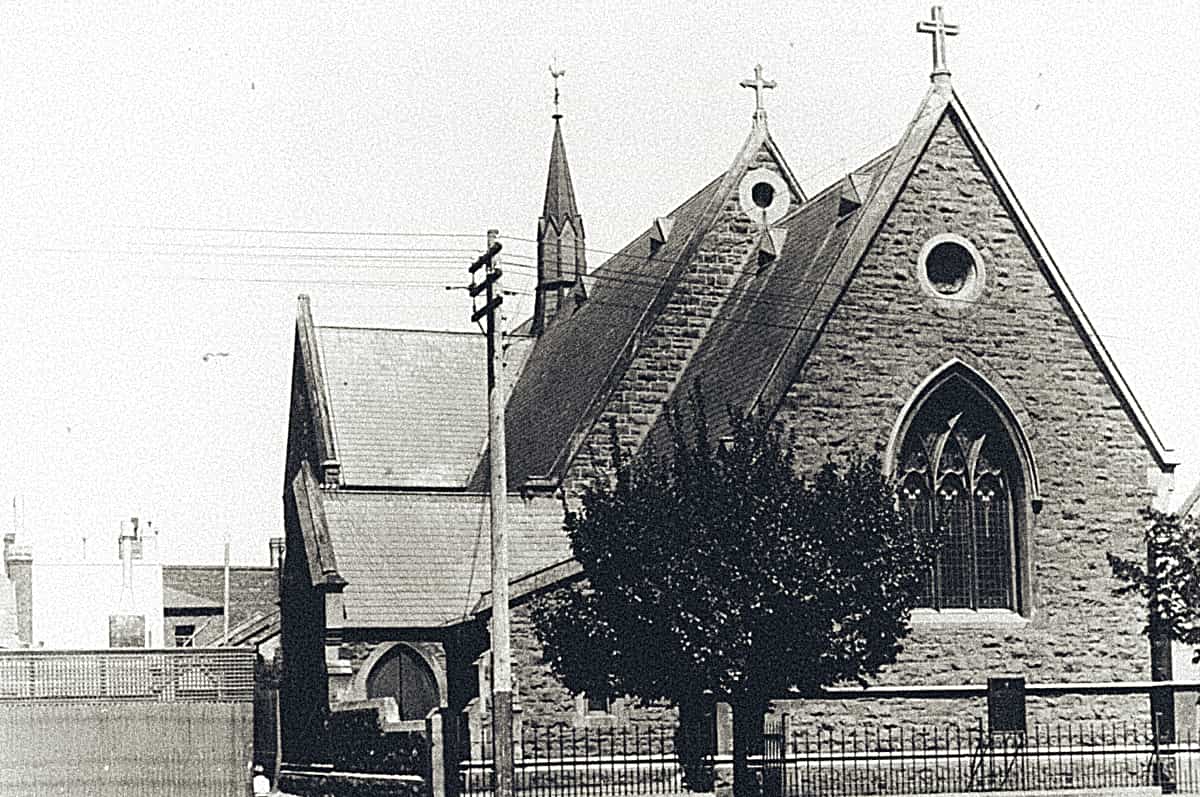
Catholic Apostolic Church, Carlton – exterior viewed from the north
(historic photograph kindly supplied by Fr Jim Brady [c. 1920s?])
Historical and Technical Documentation by John Maidment
© OHTA, February 2022

Catholic Apostolic Church, Carlton – exterior viewed from the north
(historic photograph kindly supplied by Fr Jim Brady [c. 1920s?])
Historical and Technical Documentation by John Maidment
© OHTA, February 2022
The land for the Catholic Apostolic Church was reserved in September 1864.1 The first part of the church, designed by Leonard Terry, consisting of the present nave, was opened in 1865. In 1887, major extensions took place, designed by Terry & Oakden,2 consisting of the heightening of part of the nave and the addition of transepts, and a large sanctuary with flanking aisles. The building was lavishly furnished. Following the closure of the Catholic Apostolic Church, the building was used for a period as an Anglican Church and finally as the Romanian Orthodox Church. The interior of the building has since been elaborately painted with frescoes.
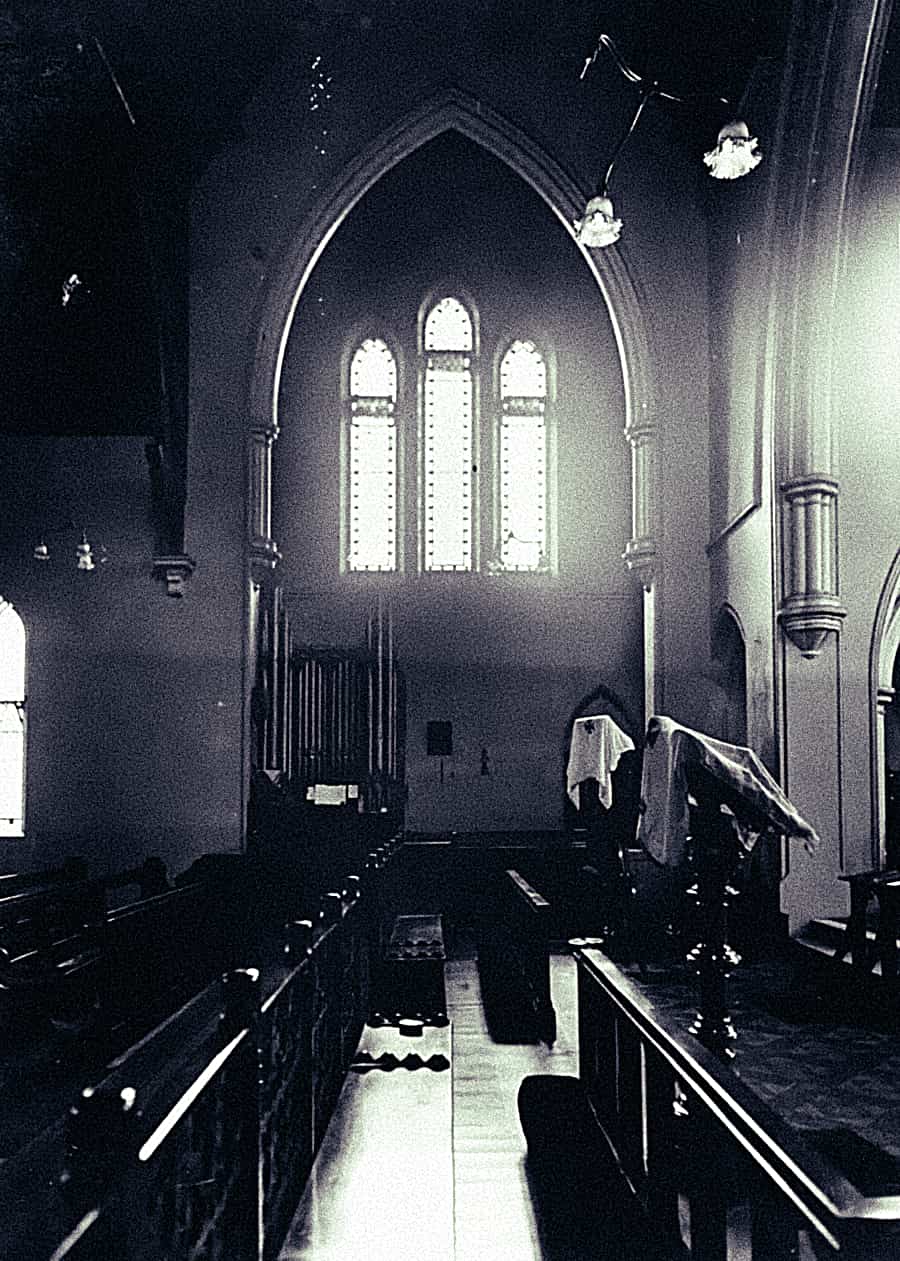
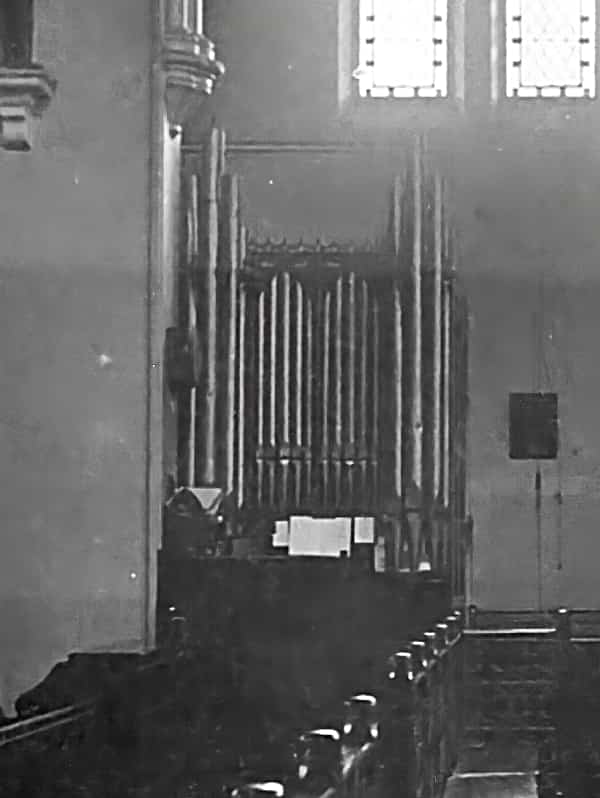
Catholic Apostolic Church, Carlton – left transept and organ
(historic photograph kindly supplied by Fr Jim Brady [c. 1920s?])
The organ was built by George Fincham between 1874 and 1880, although no record of its construction can be found in the firm’s records. It was placed in a corner of the left transept and the case incorporated two towers, the spotted metal pipes held in place by turned wooden spindles.3
The specification was recorded in January 1927 by Geo.Fincham & Sons Pty Ltd in the firm’s records:
| GREAT Open Diapason Gedact Principal Swell to Great SWELL Keraulophon Principal (Flute) Fifteenth PEDAL Bourdon Great to Pedal Swell to Pedal |
8 8 4 8 4 2 16 |
Compass: 56/294
Mechanical key and stop action
Attached drawstop console
The organ was rebuilt in 1939 by Geo. Fincham & Sons Pty Ltd with new soundboards, tubular-pneumatic action and a new detached and reversed stopkey console. The cost of the work was quoted as £745 on 25 July 1938.5
| GREAT Open Diapason Stopped Diapason Dulciana Principal Flute Swell to Great |
8 8 8 4 4 |
ex former Great Organ ex former Great Organ [new] ex former Great Organ [new] |
|
| SWELL Open Diapason Stopped Diapason Gamba Voix Celeste Flute Fifteenth Oboe Tremulant |
8 8 8 8 4 2 8 |
[new] [new] ex former Swell organ (revoiced Keraulophon) with new bass TC new ex former Swell Organ ex former Swell Organ [new] |
|
| PEDAL Subbass Bourdon Bass Flute Great to Pedal Swell to Pedal |
16 16 8 |
A new A derived at ½ wind A |
Compass: 61/30
3 thumb pistons to Great
3 thumb pistons to Swell
Balanced mechanical swell pedal
Detached stopkey console6
The organ was in place after 2000, but is no longer maintained or used for the liturgy.
The photographs of the building were kindly supplied by Fr Jim Brady, who was in charge of the building for a time after it being taken over by the Anglican Church.
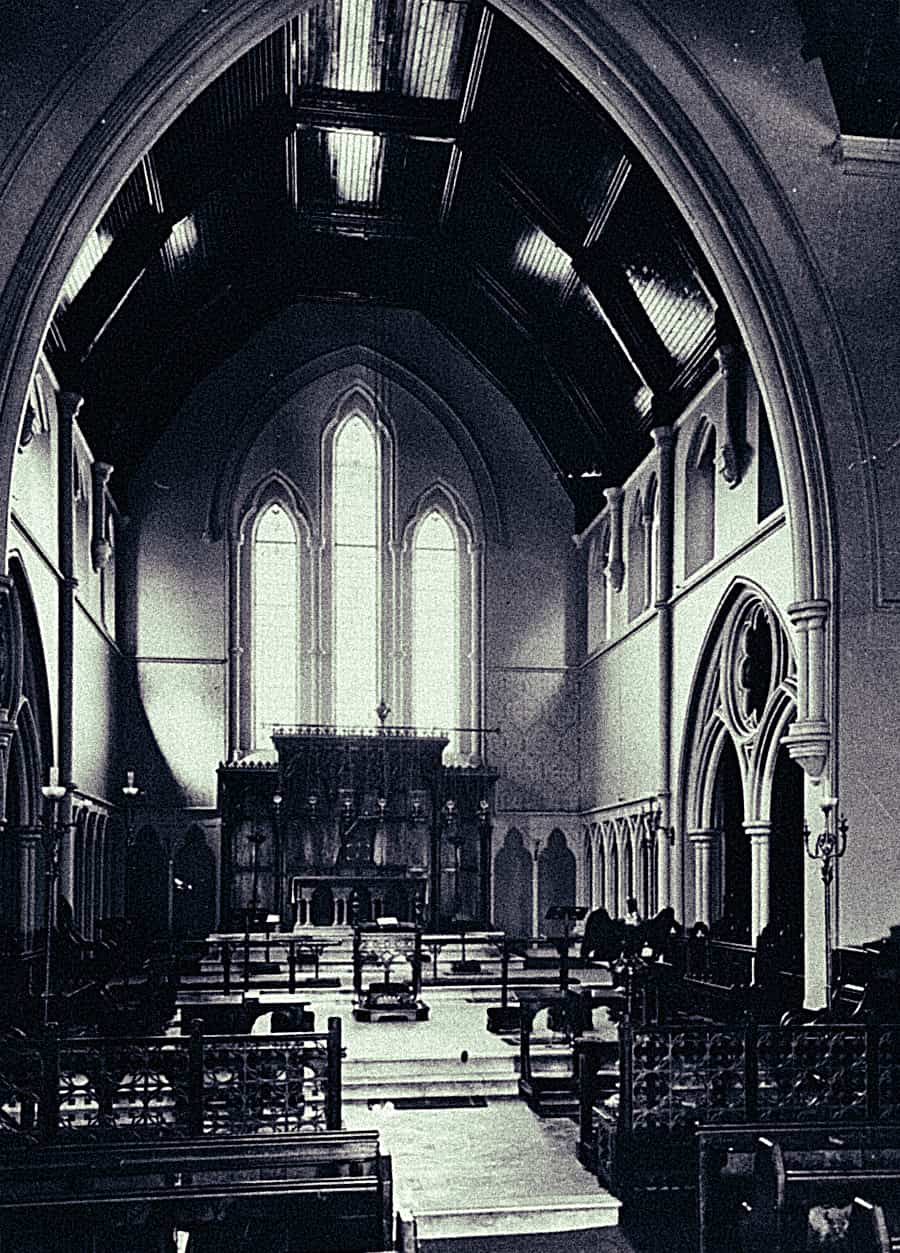
Catholic Apostolic Church, Carlton – sanctuary
(historic photograph kindly supplied by Fr Jim Brady [c. 1920s?])
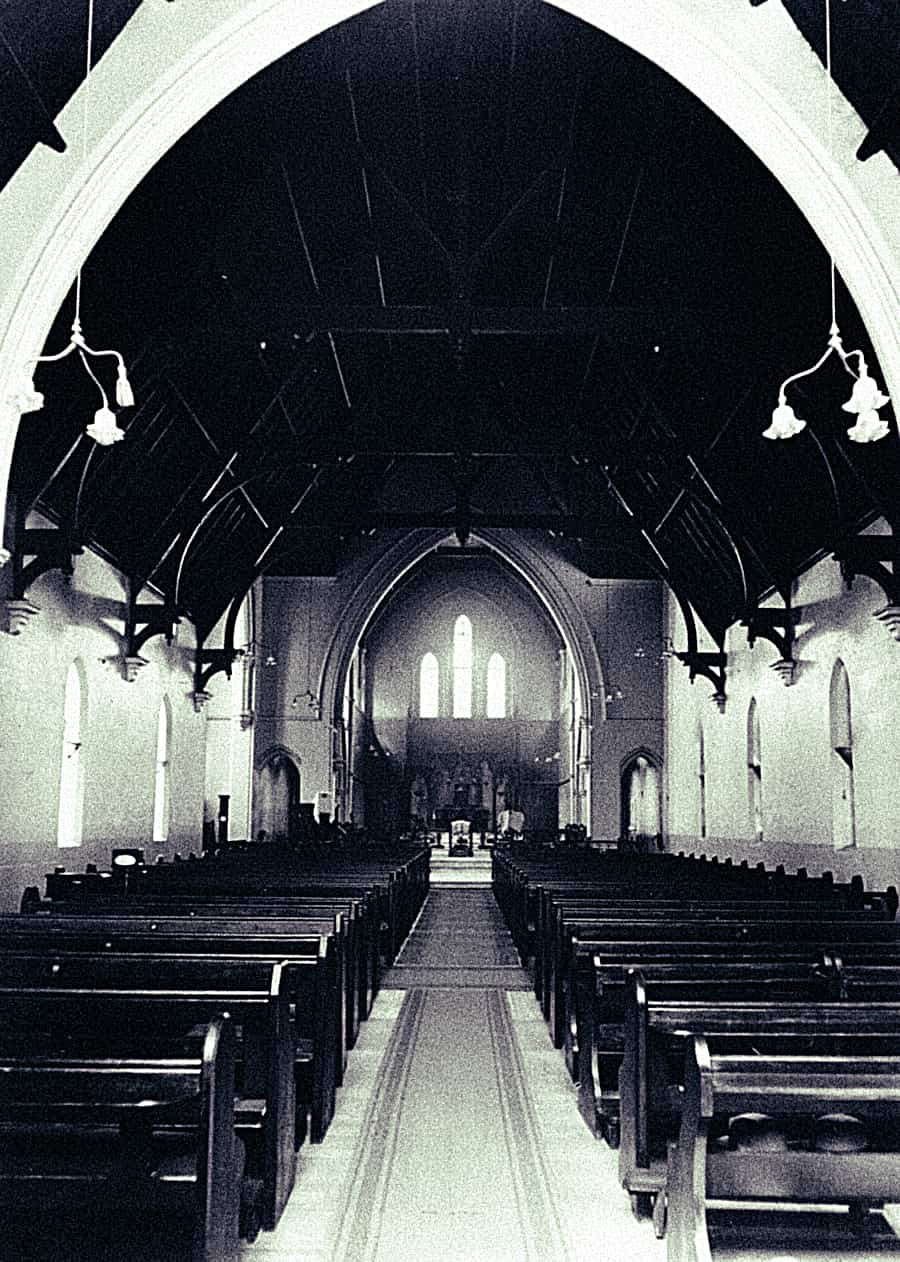
Catholic Apostolic Church, Carlton – view from the rear of the nave
(historic photograph kindly supplied by Fr Jim Brady [c. 1920s?])
1 The Age, 14 September 1864, p.7
2 Victorian Churches, edited by Miles Lewis (Melbourne: National Trust of Australia (Victoria), 1991), p.50.
3 This can be observed in the photograph. From the late 1870s, Fincham abandoned the use of decorative turned spindles and used zinc in almost all cases for façade pipes from 1880 onwards.
4 Geo. Fincham & Sons Pty Ltd letters (State Library of Victoria)
5 Ibid. A quotation on 25 July 1938 gives full details of the proposed changes
6 Specification noted 1967 John Maidment with annotations from the 1938 quotation